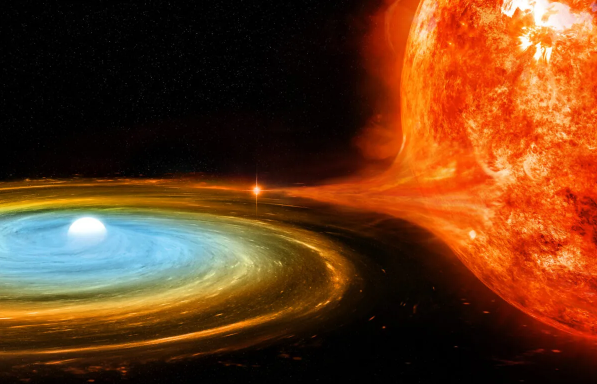Does Light Pollution Matter?
Astronomical events like the Coronae Borealis nova can give us a healthy perspective on our day-to-day hangups
Sometime in the next few months, a white dwarf star within the faintly visible constellation T Coronae Borealis is predicted to become a nova bright and conspicuous to any casual stargazer.
The T Coronae Borealis nova will last several days before shrinking back into a regular white dwarf star, the most common form stars assume when they die. It will burn intensely and briefly, like a loose wad of newspaper dropped on a small campfire. Then the nova will vanish from eyesight. Again.

This specific nova occurs every 80 years on average. Unless you are very young or very fortunate, this will be the last time it occurs in your lifetime. We also know there is a 68 percent chance it will occur before September, and a 95 percent chance it will occur before December.
The science that allows us to predict and understand all this is fascinating. But to me, the most fascinating part of this is that when you look up to see this in July, or August, or possibly a bit later, you will really be looking into the distant past. Because the Coronae Borealis constellation is about 3,000 light years away.
When you look at the Coronae Borealis nova, you’ll be looking at something that happened at a time when the Bronze Age was gradually giving way to the Iron Age. You will be seeing light that originated at the time the Phoenician alphabet was being developed. It is overwhelmingly far away, and one cannot pause to think about this without feeling a heightened appreciation of how utterly unlikely, weird, and wonderful it is that we even exist.
But something is terribly wrong.
Next time this happens some eight decades into the future, it may be impossible for all but a very small, privileged few to observe from Earth. If we continue on the path we’ve been on for the last few decades, nearly all astronomical events, meteors, and most of the stars you are yet able to see, will be invisible to almost everyone alive.
The reason is light pollution.
But the good news is that compared to almost every other major challenge humanity has faced and overcome, and those we face today, light pollution is easily reversible and solvable.
People need a sense of wonder. We need perspective on our struggles and anxieties, a perspective that diminishes the weight of political squabbles and unopened work emails and social comparison and addictions. Something that lightens our burdens, and yet inspires and encourages us to dream big.
When I was growing up in Wichita, KS, already a sizable town of around 300,000 people, the Milky Way was visible from my backyard. We took that for granted. On summer evenings my brothers and I would sometimes ask my mom if we could sleep out on the trampoline. I don’t remember her ever saying no.
It was perfectly safe to sleep outside in my neighborhood back when it was considered bad manners to install floodlights around your property.
If I want to view the Milky Way, or any of the minor constellations, with my kids today, we have to get well outside of town. And I live in a much smaller town than the one I grew up in. My kids initially learned about the Milky Way from me telling stories about my childhood. My girlfriend’s intelligent 15-year-old son didn’t even realize it was theoretically visible from Earth. I learned about it by looking up at it in wonder.
Which version of childhood sounds more appealing to you?
The ability to see the cosmos, for those who can, is a ticket outside of your own head. It is a remedy for self-absorption and anxiety. We all need the night sky, or at least the type of contemplation it affords us, from time to time. Yet every year in the U.S. we look up and see seven- to 10 percent fewer stars.
As daunting a problem as this is, there are simple, practical measures we can take to mitigate it. To curb light pollution, we need to appreciate three basic things: light intensity, color temperature, and direction.
- Intensity – Lighting should be bright enough for comfort and safety, not bright enough to annoy, distract, or harm drivers and pedestrians
- Color Temperature – Lighting should be on the red end of the light spectrum, which is more attractive and healthier for both people and nocturnal wildlife
- Direction – Lighting should be shielded and directed downward, safely illuminating whatever property needs to be lit as opposed to a lot of neighboring properties and trees and the sky itself
By keeping these things in mind, we can renew the night sky many of us knew growing up. It requires very little in terms of economic resources, and in many cases it can be cost negative. It requires some political will, some public education, some planning, and courtesy. It requires no tradeoffs in terms of public or individual safety.
It’s too late for my kids to learn about the Milky Way as I did, on a spring evening in my own backyard. But paradoxically, it is by no means too late for my grandkids.
That’s one of the reasons our work at DarkSky Colorado matters.
Sources | Further reading
Tanya Hill and Amanda Karakas, “Look up! A once-in-a-lifetime explosion is about to create a ‘new’ star in the sky”, The Conversation, 8 July 2024
Beth Ridgeway, “NASA, Global Astronomers Await Rare Nova Explosion”, NASA.gov, 6 June 2024
Ezzy Pearson and Chris Lintott, “T Coronae Borealis nova could become a ‘new star’ in the sky any day now, and will be as bright as the North Star”, BBC Sky at Night Magazine, 20 Aug 2024

